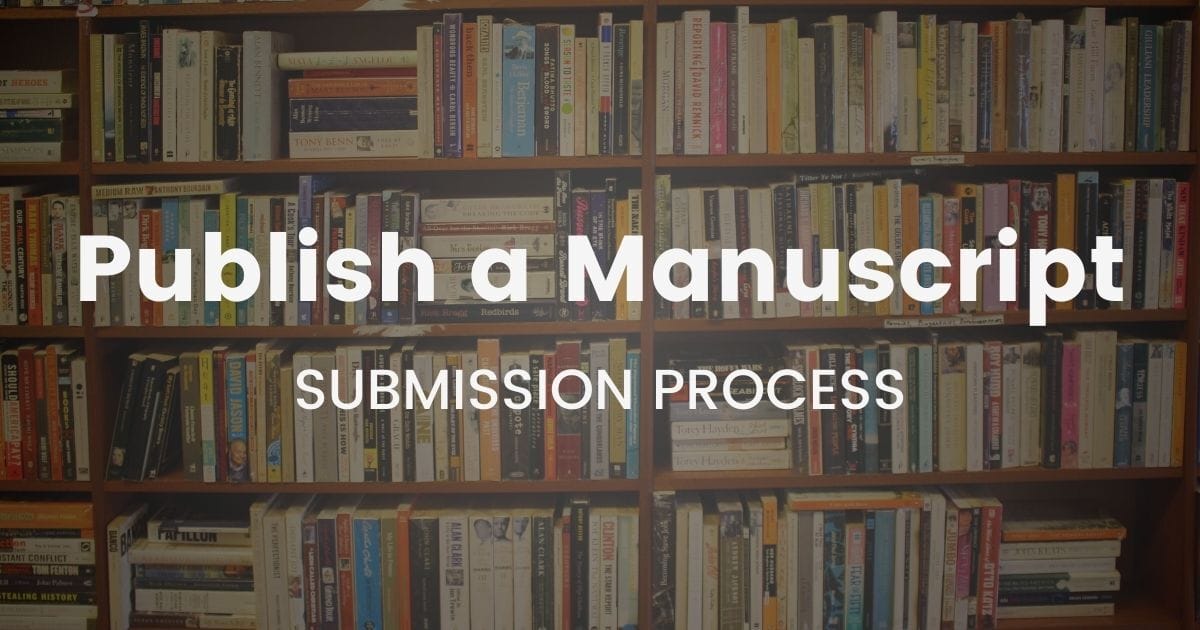Read on my website
Read time: 5 min.
There are a few things to consider before submitting your manuscript to a journal.
The first thing is to get to know more about the expectations of the journal.
Visit the website of the journal and look for the author’s guidelines.
Any serious journal would have an author guide where the editors list the manuscript requirements to authors and how the manuscript should be submitted.
Serious journals also have a submission system like ScholarOne, where authors can submit their manuscripts, and can check the status of the publishing process.
Editors can invite peer reviewers through such a system. Authors can view the reports of the peer reviews and the decisions of the editors directly in the system.
If a journal doesn’t have such a system and asks you to submit your manuscript by email, then I would recommend you stay away from such a journal.
Submitting a manuscript by email is the best way for it to get lost.
I have also seen predatory journals scamming researchers via email.
On the journal’s website, you’ll find different guidelines related to (not an exhaustive list):
The expected format
For instance, the journal editors expect to receive your manuscript as a Word document, not a PDF. Save some time here by having your manuscript in the right format.
Manuscript Structure
Have a properly structured manuscript with headings and subheadings. Figures & tables should have captions as well.
Abstract
Journals require abstracts to have a specific length. If the journal mentions that the abstract should be between 150 and 250 words, then make sure that you respect that. Along with the title, the abstract of your manuscript will be freely available on search engines regardless of its access type.
Keywords
Similarly, some journals require no more than 5 or 6 keywords to be included in your submission. Keywords are also indexed in bibliographic databases
Files format
Also make sure that you prepare all your files.
For instance, figures need to have the right types, such as PNG, SVG or EPS. These are vector images that can be easily managed in the editing and publishing process by the publisher.
Cover letter
Not always a requirement, but it’s a nice-to-have.
This is the opportunity to speak directly to the editor and explain why your manuscript is relevant to the journal that you target.
This is also where you can suggest a few potential relevant peer reviewers.
So, have your cover letter ready.
References
References need to follow a certain style (APA style MLA, Chicago or Vancouver…).
Have a look at your references and make sure they are formatted correctly. You can use a tool like EndNote to manage and format your references automatically (more on this in a future newsletter).
When available, include the DOI of your references. And make sure the reviewers can access all your references.
Submission systems used by journals usually offer an automatic check on references (availability, format etc…). So, reviewers would also have a look at your references.
Funding
Make sure that your manuscript includes funding information if that applies to you.
If you didn’t receive any funding, then just mention that no funding was received for your research project.
Conflicts of interest
If there is any conflict of interest or any ethical issues you need to state them in your manuscript
Data availability
Journals might ask you to make your data and materials (including software) available. Include a link to an open repository where you share your data when possible.
In the author guidelines, you will get to know about the peer review process (more on this in a future newsletter on how to manage the peer review process).
Check the submitted files
Once you have uploaded all the required information, the submission system will build a file (usually a PDF) of your manuscript. Check the result.
Make sure the submitted manuscript does not include tracked editions, comments, etc…
Then you’re good to go. Hit the submit button and wait for the first feedback from the editor in charge of your manuscript before it goes to peer review.
That’s it. This is a quick overview of the submission of a manuscript.
The important point is to follow the different author guidelines.
In conclusion: prepare all your data by respecting the requirements of your target journal to avoid basic rejection.
As usual, if anything is unclear, don’t hesitate to contact me and I will reply.
See you in the next newsletter where I will talk about the peer review process.
Jamal
My favorite things this week
Feel free to follow me there and share these tips with your colleagues.
Walking. I feel more energized now that I walk more often – the nice Winter weather in Dubai definitely helps. Also, walking triggers lots of ideas and clears the mind. I highly recommend it.
Question of the Week
What else do you look at before submitting your manuscript?
Share with us your tips in the comments section!
Quote of the Week
“If you don’t have time to read, you don’t have the time (or the tools) to write. Simple as that.”
― Stephen King

